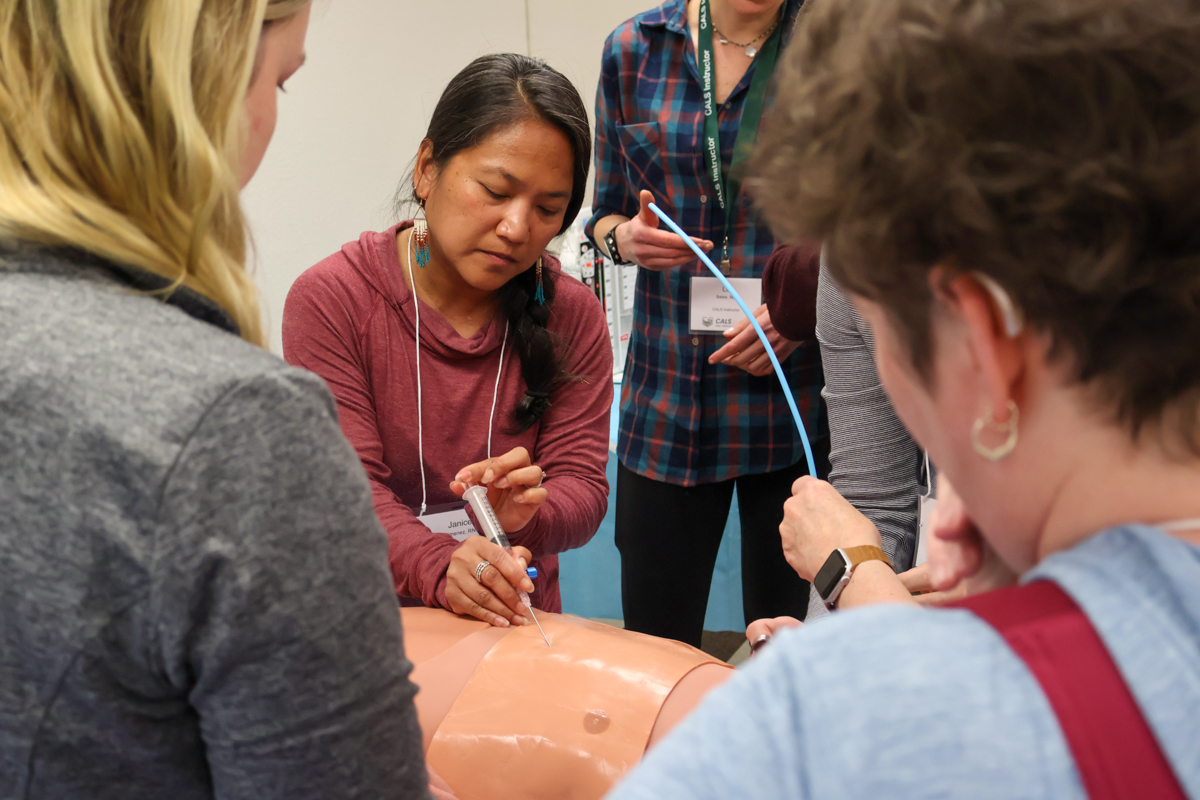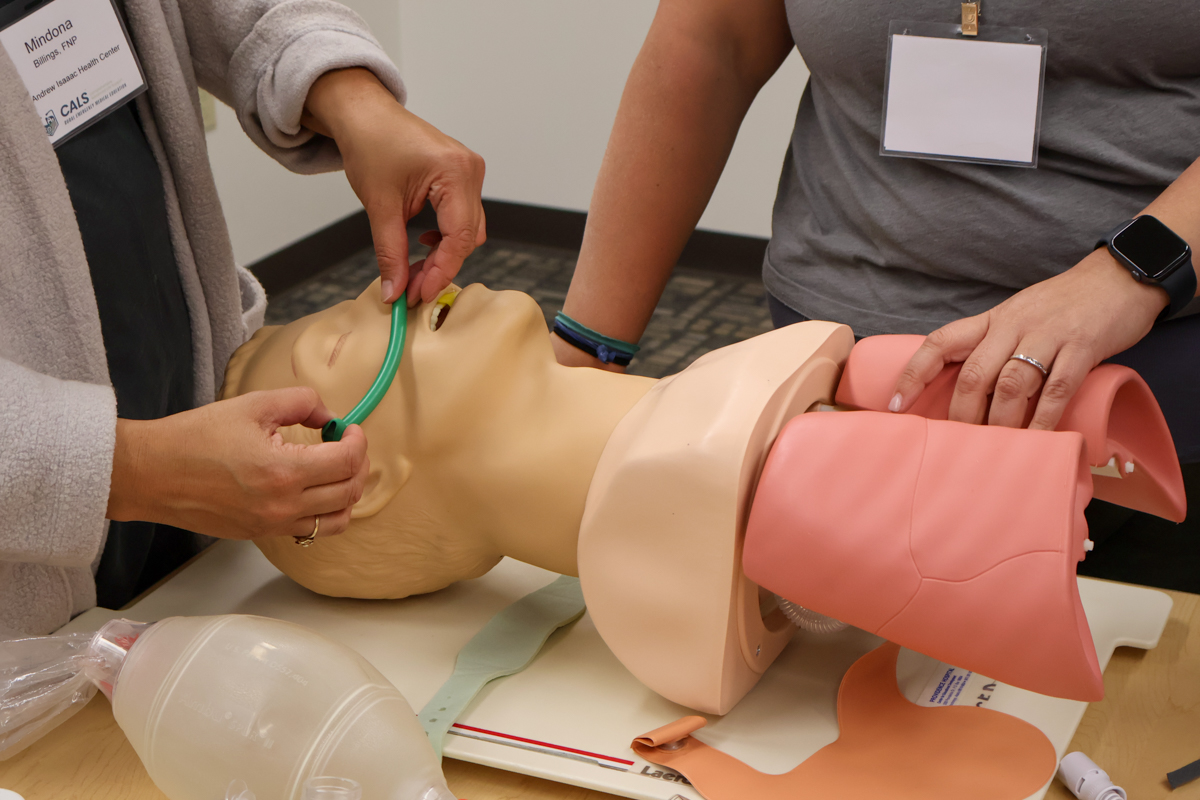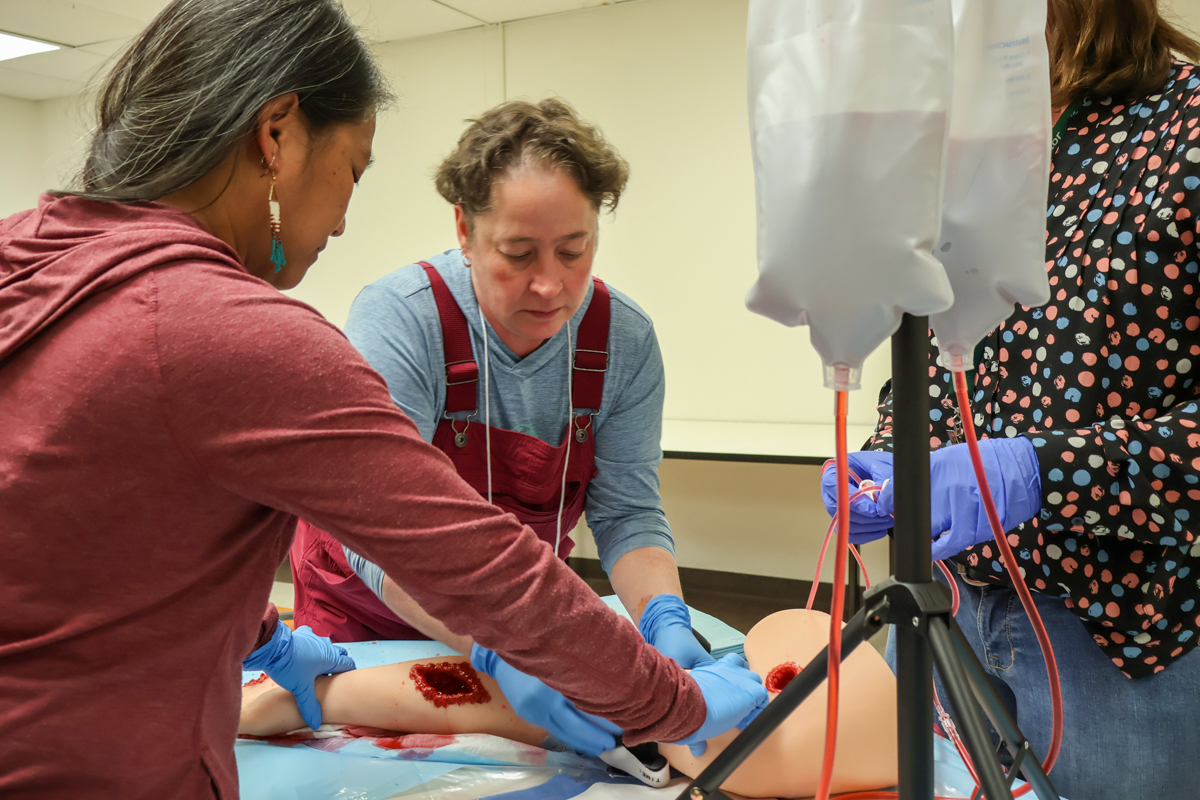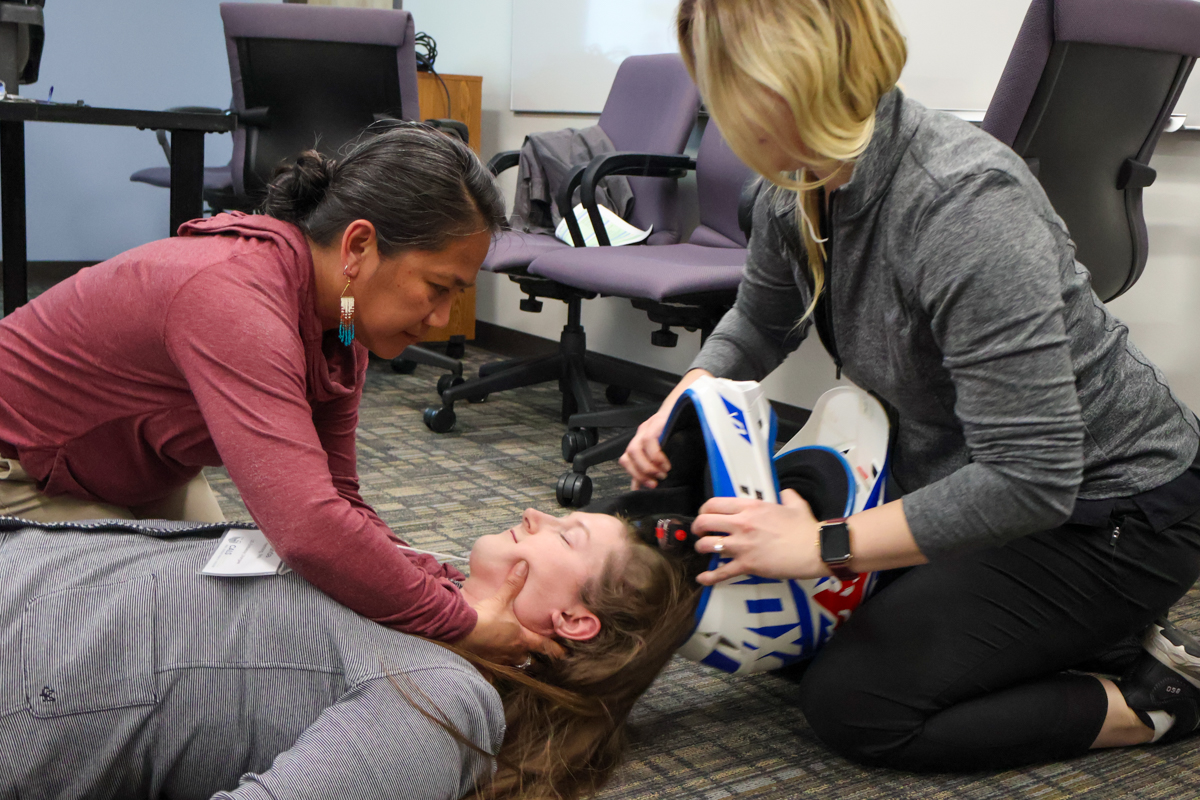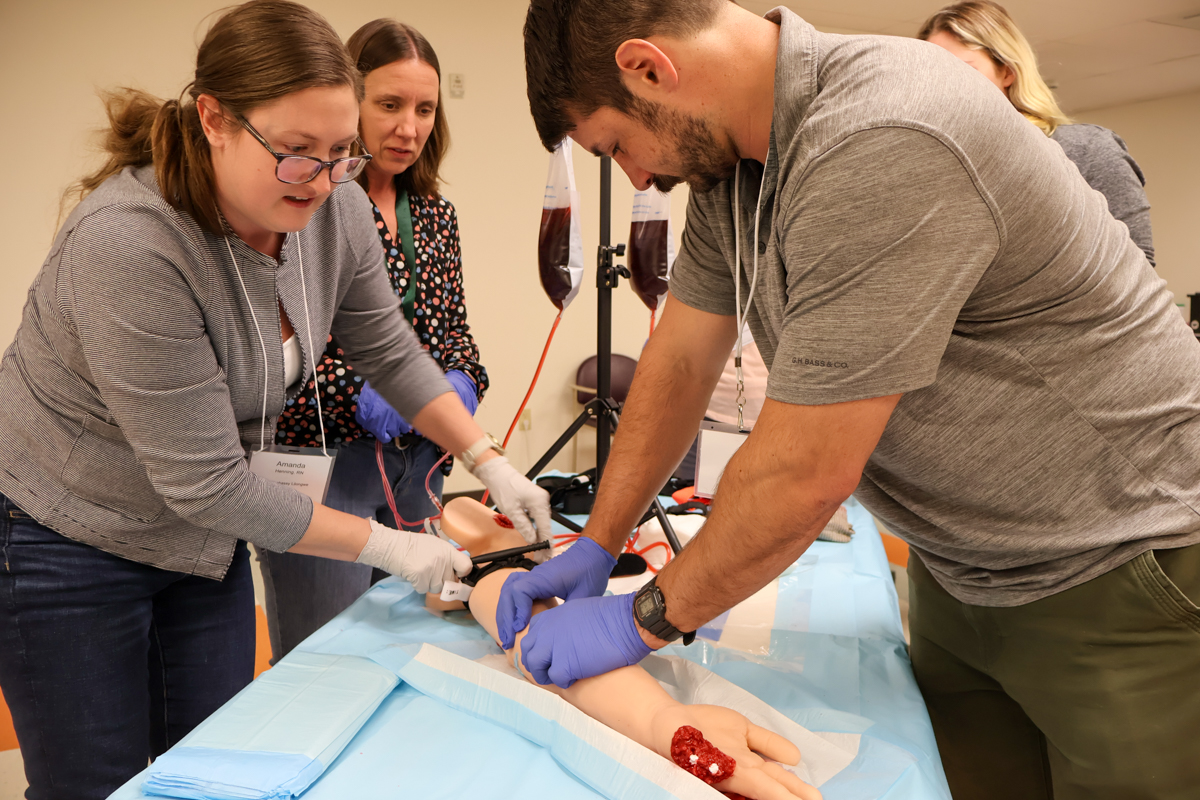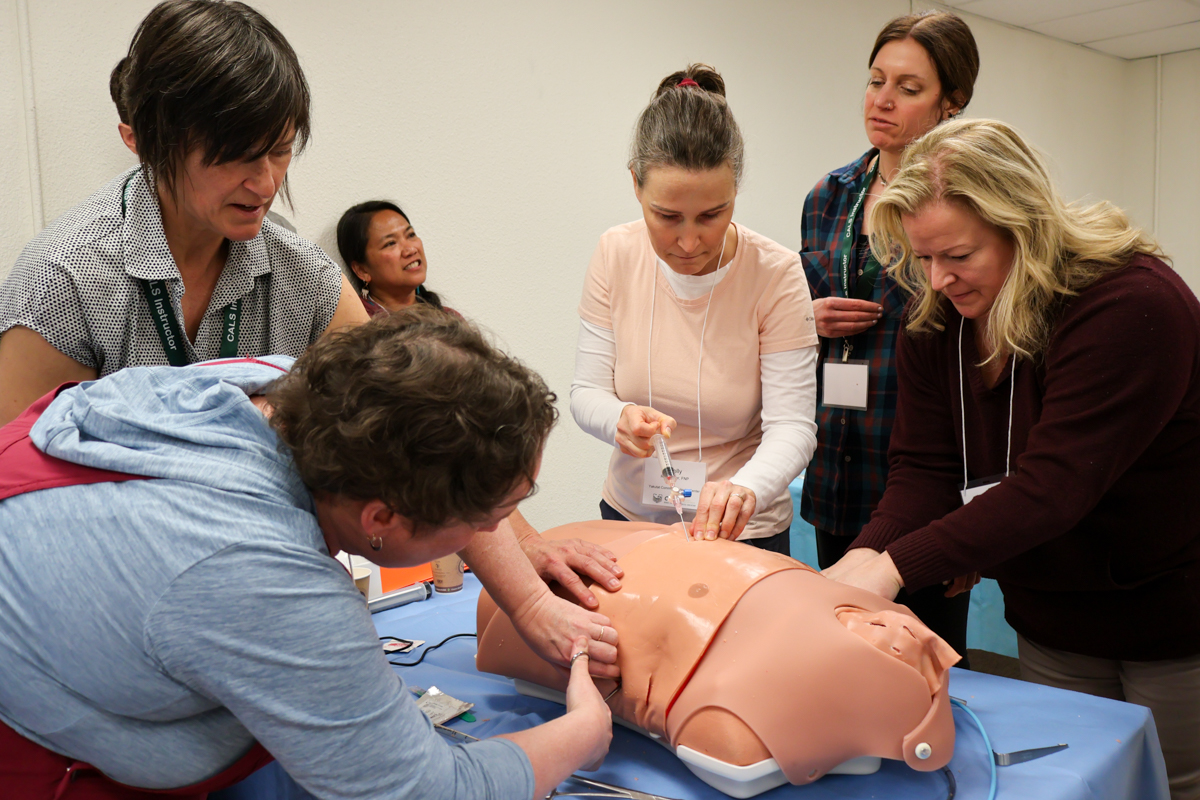Enhancing Emergency Medical Care
by Jessica Degnan |
Healthcare providers from across the state of Alaska completed specialized training through the Comprehensive Advanced Life Support (CALS) program, thanks to the Alaska Center for Rural Health and Health Workforce (ACRH-HW) at the University of Alaska Anchorage (UAA) in early May. This initiative brought together a diverse group of professionals, including three physicians, seven physician assistants, six family nurse practitioners, three registered nurses, and four paramedics, to enhance emergency medical care in remote areas. The CALS program's intensive curriculum and hands-on simulations equipped participants with advanced skills crucial for managing complex medical emergencies, even in resource-limited settings. This collaborative effort emphasizes a commitment to improving healthcare access and quality across the state, ensuring that residents in Alaska's most remote communities receive timely and effective care when it matters most. Looking ahead, ACRH-HW plans to continue providing support for the CALS program to be offered in Alaska, further strengthening Alaska’s health workforce.

CATEGORIES
TAGS
- Awards
- Behavioral Health
- Climate Change
- Community
- COVID-19
- Diversity, Equity, and Inclusion
- Forensic Care
- Giving
- Simulation
- Workforce Development
ACADEMIC UNITS
- Department of Human Services
- Division of Population Health Sciences
- Justice Center
- School of Allied Health
- School of Nursing
- School of Preventive & Therapeutic Sciences
- School of Social Work
PARTNER PROGRAMS
CENTERS & INSTITUTES
- Alaska Center for Rural Health and Health Workforce
- Center for Human Development
- Child Welfare Academy
- Interprofessional Health Sciences Simulation Center
MEDIA INQUIRIES / STORY LEADS










